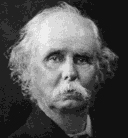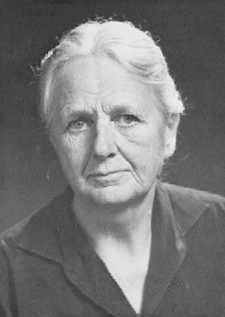Origin of the Idea
 <a onClick="window.open('/olcweb/cgi/pluginpop.cgi?it=gif::::/sites/dl/free/0073511455/124310/origins_image.gif','popWin', 'width=70,height=90,resizable,scrollbars');" href="#"><img valign="absmiddle" height="16" width="16" border="0" src="/olcweb/styles/shared/linkicons/image.gif"> (1.0K)</a> <a onClick="window.open('/olcweb/cgi/pluginpop.cgi?it=gif::::/sites/dl/free/0073511455/124310/origins_image.gif','popWin', 'width=70,height=90,resizable,scrollbars');" href="#"><img valign="absmiddle" height="16" width="16" border="0" src="/olcweb/styles/shared/linkicons/image.gif"> (1.0K)</a> | WCA.1 Elasticity of Resource Demand |  <a onClick="window.open('/olcweb/cgi/pluginpop.cgi?it=gif::::/sites/dl/free/0073511455/124310/origins_image.gif','popWin', 'width=70,height=90,resizable,scrollbars');" href="#"><img valign="absmiddle" height="16" width="16" border="0" src="/olcweb/styles/shared/linkicons/image.gif"> (1.0K)</a> <a onClick="window.open('/olcweb/cgi/pluginpop.cgi?it=gif::::/sites/dl/free/0073511455/124310/origins_image.gif','popWin', 'width=70,height=90,resizable,scrollbars');" href="#"><img valign="absmiddle" height="16" width="16" border="0" src="/olcweb/styles/shared/linkicons/image.gif"> (1.0K)</a> | WCA.2 Monopsony |  <a onClick="window.open('/olcweb/cgi/pluginpop.cgi?it=gif::::/sites/dl/free/0073511455/124310/origins_image.gif','popWin', 'width=70,height=90,resizable,scrollbars');" href="#"><img valign="absmiddle" height="16" width="16" border="0" src="/olcweb/styles/shared/linkicons/image.gif"> (1.0K)</a> <a onClick="window.open('/olcweb/cgi/pluginpop.cgi?it=gif::::/sites/dl/free/0073511455/124310/origins_image.gif','popWin', 'width=70,height=90,resizable,scrollbars');" href="#"><img valign="absmiddle" height="16" width="16" border="0" src="/olcweb/styles/shared/linkicons/image.gif"> (1.0K)</a> | WCA.3 Human Capital |
 <a onClick="window.open('/olcweb/cgi/pluginpop.cgi?it=gif::::/sites/dl/free/0073511455/124310/origins_image.gif','popWin', 'width=70,height=90,resizable,scrollbars');" href="#"><img valign="absmiddle" height="16" width="16" border="0" src="/olcweb/styles/shared/linkicons/image.gif"> (1.0K)</a> <a onClick="window.open('/olcweb/cgi/pluginpop.cgi?it=gif::::/sites/dl/free/0073511455/124310/origins_image.gif','popWin', 'width=70,height=90,resizable,scrollbars');" href="#"><img valign="absmiddle" height="16" width="16" border="0" src="/olcweb/styles/shared/linkicons/image.gif"> (1.0K)</a> | WCA.1 Elasticity of Resource Demand |
Although not in their modern form, Alfred Marshall articulated the determinants of the elasticity of resource demand found in the text. Marshall's explanation survived and flourished in part because of the work of Arthur C. Pigou (1877-1959) and Sir John R. Hicks (1904-1989), who helped to summarize and clarify the determinants.
Alfred Marshall (1842-1924) was born in Clapham, England, the son of a cashier of the Bank of England. Despite his father's wishes that he study for the ministry at Oxford, Marshall attended Cambridge University, where he studied mathematics, physics and economics. In 1877 he married one of his students, Mary Paley. They collaborated on his first book, The Economics of Industry, published in 1879.(1)
The leading economist of his time, Marshall belonged to what economists refer to as the Neoclassical school of economic thought. Much of what appears in your textbook comes from Neoclassical economics, and Marshall's contributions have stood the test of time.
Although Marshall used mathematics extensively in his economic models, he emphasized that the math was merely a shorthand language, and not the foundation for economic inquiry and analysis. Marshall established his own set of rules for the use of mathematics in economic theorizing:
|  <a onClick="window.open('/olcweb/cgi/pluginpop.cgi?it=jpg::::/sites/dl/free/0073511455/124320/origin27_1.jpg','popWin', 'width=178,height=208,resizable,scrollbars');" href="#"><img valign="absmiddle" height="16" width="16" border="0" src="/olcweb/styles/shared/linkicons/image.gif"> (20.0K)</a> <a onClick="window.open('/olcweb/cgi/pluginpop.cgi?it=jpg::::/sites/dl/free/0073511455/124320/origin27_1.jpg','popWin', 'width=178,height=208,resizable,scrollbars');" href="#"><img valign="absmiddle" height="16" width="16" border="0" src="/olcweb/styles/shared/linkicons/image.gif"> (20.0K)</a> |
"(1) Use mathematics as a shorthand language, rather than as an engine of inquiry. (2) Keep to them till you have done. (3) Translate into English. (4) Then illustrate by examples that are important in real life. (5) Burn the mathematics. (6) If you can't succeed in (4), burn (3). This last I [Marshall] did often."(2)
- William Breit and Roger Ransom, The Academic Scribblers, (New York: Holt, Rinehart and Winston, Inc., 1971), 21.
- Alfred Marshall, Memorials of Alfred Marshall, ed. A.C. Pigou (London: Macmillan, 1925), 427.
Photograph courtesy of: Used from the website of Thoemmes Press. Original owner unknown.
 <a onClick="window.open('/olcweb/cgi/pluginpop.cgi?it=gif::::/sites/dl/free/0073511455/124310/origins_image.gif','popWin', 'width=70,height=90,resizable,scrollbars');" href="#"><img valign="absmiddle" height="16" width="16" border="0" src="/olcweb/styles/shared/linkicons/image.gif"> (1.0K)</a> <a onClick="window.open('/olcweb/cgi/pluginpop.cgi?it=gif::::/sites/dl/free/0073511455/124310/origins_image.gif','popWin', 'width=70,height=90,resizable,scrollbars');" href="#"><img valign="absmiddle" height="16" width="16" border="0" src="/olcweb/styles/shared/linkicons/image.gif"> (1.0K)</a> | WCA.2 Monopsony |
Joan Robinson (1903-1983) developed the monopsony model. While others in the field of imperfect competition were focusing on the monopoly power of sellers, Robinson developed the model for a single buyer. She developed the graphical textbook model of how a single hirer of labor could pay a lower-than-competitive-wage and still attract the profit-maximizing quantity of labor.
As an economist, Robinson had an eclectic career. Not only did she address a wide variety of issues, her philosophical approach to economics changed dramatically. Robinson started her professional life as a neoclassical economist, studying under Alfred Marshall at Cambridge University. As her career progressed, she became a contributor to the more liberal Keynesian economics and ultimately to the somewhat radical post-Keynesian economics.
In addition to her theoretical contributions, Robinson actively engaged in the formation of public policy. In order to combat low wages and lack of bargaining power in monopsony markets, Robinson and her theories supported a number of laws friendly to labor. Three of particular significance was the Wagner Act (1935), which promoted the growth of labor unions; the Robinson-Patman Act (1936), which protected small sellers from the monopsony power of large buyers; and the Fair Labor Standards Act (1938), which established the minimum wage.
|  <a onClick="window.open('/olcweb/cgi/pluginpop.cgi?it=jpg::::/sites/dl/free/0073511455/124320/origin28_1.jpg','popWin', 'width=275,height=387,resizable,scrollbars');" href="#"><img valign="absmiddle" height="16" width="16" border="0" src="/olcweb/styles/shared/linkicons/image.gif"> (9.0K)</a> <a onClick="window.open('/olcweb/cgi/pluginpop.cgi?it=jpg::::/sites/dl/free/0073511455/124320/origin28_1.jpg','popWin', 'width=275,height=387,resizable,scrollbars');" href="#"><img valign="absmiddle" height="16" width="16" border="0" src="/olcweb/styles/shared/linkicons/image.gif"> (9.0K)</a> |
 <a onClick="window.open('/olcweb/cgi/pluginpop.cgi?it=gif::::/sites/dl/free/0073511455/124310/origins_image.gif','popWin', 'width=70,height=90,resizable,scrollbars');" href="#"><img valign="absmiddle" height="16" width="16" border="0" src="/olcweb/styles/shared/linkicons/image.gif"> (1.0K)</a> <a onClick="window.open('/olcweb/cgi/pluginpop.cgi?it=gif::::/sites/dl/free/0073511455/124310/origins_image.gif','popWin', 'width=70,height=90,resizable,scrollbars');" href="#"><img valign="absmiddle" height="16" width="16" border="0" src="/olcweb/styles/shared/linkicons/image.gif"> (1.0K)</a> | WCA.3 Human Capital |
The idea that knowledge and skills possess economic value is not new. Since the time of Adam Smith (1723-1790), economists have recognized that acquired abilities and improved health affect productivity, output, wages, and more. The first to formalize this idea into a theory of human capital was Theodore Schultz (1902-1998).
Schultz spent his childhood in Arlington, South Dakota. He received his undergraduate degree from South Dakota State University and his Ph.D. from the University of Wisconsin. In 1930 he began teaching at Iowa State University, and in 1943 moved on to the University of Chicago. Schultz was a prolific author, writing 13 books and more than 250 articles, most of them in the areas of agricultural economics, economic growth and development, and human capital. Schultz won the Nobel Prize (along with Arthur Lewis) in 1979 for his contributions in these areas.
To emphasize the importance of investment in human capital in understanding economic performance, Schultz wrote:
This knowledge and skill are in great part the product of investment and, combined with other human investment, predominantly account for the productive superiority of the technically advanced countries. To omit them in studying growth is like trying to explain Soviet ideology without Marx.(1)
Another contributor to human capital theory was Gary Becker (b. 1930). Born in Pottstown, Pennsylvania, he received his undergraduate education from Princeton and his Ph.D. from the University of Chicago. He taught for 12 years at Columbia University before returning to the University of Chicago in 1970 to become a professor of economics and sociology. Becker's contributions are varied, often reaching outside the areas economists usually explore. He has developed theories of discrimination, marriage, divorce, fertility, and altruism, to name a few. For his efforts Becker was rewarded with the Nobel Prize in economics in 1992.
|  <a onClick="window.open('/olcweb/cgi/pluginpop.cgi?it=jpg::::/sites/dl/free/0073511455/124320/origin28_2.jpg','popWin', 'width=430,height=321,resizable,scrollbars');" href="#"><img valign="absmiddle" height="16" width="16" border="0" src="/olcweb/styles/shared/linkicons/image.gif"> (29.0K)</a> <a onClick="window.open('/olcweb/cgi/pluginpop.cgi?it=jpg::::/sites/dl/free/0073511455/124320/origin28_2.jpg','popWin', 'width=430,height=321,resizable,scrollbars');" href="#"><img valign="absmiddle" height="16" width="16" border="0" src="/olcweb/styles/shared/linkicons/image.gif"> (29.0K)</a> |
In the area of human capital, Becker developed a theoretical model for deciding whether to invest in, for example, a college education. In the model, the direct costs (tuition, books) and indirect costs (forgone income) are measured against the benefits (the additional earnings resulting from a college education). As with most decisions in economics, if the benefits exceed the costs, the investment should occur. Becker also distinguished between general and specific training. General training creates skills and knowledge that are portable; that is, they enhance productivity wherever the worker might go. Specific training only improves productivity within the firm in which it is given.
On the importance of human capital theory, Becker wrote these prophetic words at the end of Human Capital: "I would venture the judgement that human capital is going to be an important part of the thinking about development, income distribution, labor turnover, and many other problems for a long time to come."
-
Theodore W. Schultz, "Investment in Human Capital," American Economic Review 51 (March 1961): p. 3
Photograph courtesy of: (c)Ryan McVay/Photodisc # AA014251; |



